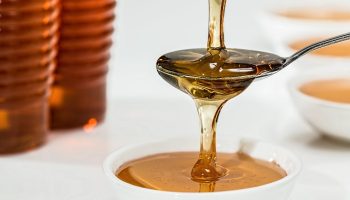
Hair loss is typically associated with male pattern baldness, but women can lose their hair too. It’s all too humiliating when that occurs, and it’s not always easy to determine the cause. It can come about from hormonal changes after pregnancy, menopause, or a stressful situation.
If you suffer from female pattern hair loss, you’re not alone. As women age, they naturally lose their hair and fewer than 50 percent of women keep a full head of hair in a lifetime. Thankfully, there are some amazing solutions to female hair loss other than surgery and hair plugs.
1. Low-Level Light Therapy
Low-Level Light Therapy (LLLT) uses cold lasers to kill bacteria and stimulate hair follicles. There’s no need for a prescription, and the treatment can be performed at home. Typically, you can see results within a few weeks.
A recent study performed in Bangkok showed that helmet-style LLLT is a simple and very effective treatment for hair loss for both men and women. For example, the Kiierr Laser Hair Cap System can be used for 30 minutes every other day.
2. Hair Loss Shampoo
Everyday shampoos will do nothing for your hair loss problem; some will even make hair loss worse. When you start to notice thinning, it’s time to change your shampoo to a natural formula that can promote rather than inhibit hair growth.
MONAT is a common shampoo used by women who want to thicken their hair and restore damaged hair follicles. This shampoo, or one that’s comparable, can work wonders, especially when used alongside other hair loss therapies.
3. Oil-Based Hair Masks
Hair masks are wonderful for restoring hydration to your locks. Heat, dry air, and your hair’s genetic makeup can contribute to a dry scalp and hair, which increases the risk for hair loss.
Choose oil-based masks that stimulate the hair follicles and fight dandruff. Rosemary, jojoba, coconut, and safflower make excellent bases for hair masks.
4. Oral Supplements and Nutrition
What’s happening on your scalp’s exterior is usually not as important as what’s going on inside your body. A woman’s diet and nutrition are essential in promoting the vitamins and nutrients necessary for productive hair growth.
A list of vitamins and nutrients necessary for hair growth include:
Vitamin A
B-Vitamins, specifically Biotin
Vitamin C
Iron
Vitamin D
Zinc
Protein
Vitamin E
You can also find great vitamins that contain several of the nutrients on this list, giving you a comprehensive vitamin complex for thicker, healthier hair.
5. Prescription Medications
Your doctor can prescribe you prescription drugs to stimulate hair growth if you wish. The most common prescription is called spironolactone, and it focuses on regulating hormones to reduce hair loss. It works by decreasing testosterone processing and binding androgen receptors.
It’s important to note that the FDA has not labeled the drug for treatment of androgenic alopecia. However, many women have found success in treating other hormone-based hair loss problems. Speak to your doctor to see if it’s the right choice for you.
6. Controlled Steroid Use
If you’re not afraid of using steroids, your doctor can prescribe you a list of controlled corticosteroids and topical steroids that can reduce hair loss and stimulate follicle growth.
You’ll probably start with corticosteroid injections in multiple places at the affected site. This typically yields results at around four weeks, and it can be repeated in the same time frame. There are risks like thinning of the skin and skin atrophy, so you’ll want to discuss those with your doctor before proceeding.
Topical steroids can also be used on the site. These can be applied at home in a cream form, but they’re usually not as effective as the injections. However, they also have fewer side effects.
7. Platelet-Rich Plasma Therapy
Some research indicates that re-processing your blood’s plasma can regenerate the follicles and spur hair growth. If you were to undergo this process, you would have your blood drawn in the lab. Technicians would then process it and inject it back into your scalp.
Note that this research is new, so there’s minimal research to support it. However, there’s little risk to doing it, and the research done so far has shown that with several sessions within a four to six-week period, you can see results that could potentially reverse your hair loss.
Photo by kyle smith on Unsplash.
Keep being AllDayChic!







